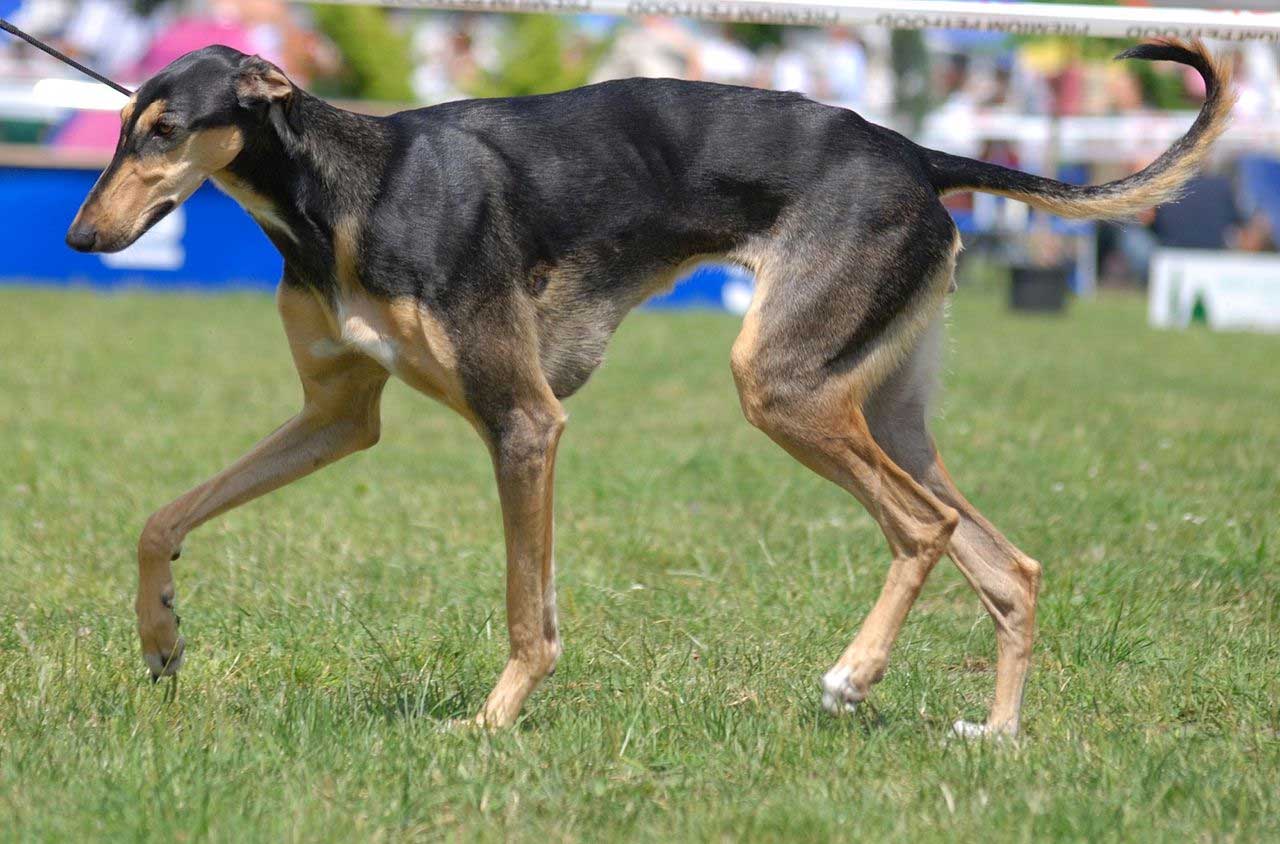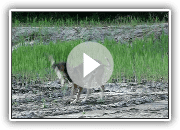Content |
|---|
History
The “Polish Greyhound” is a very ancient race. In the chronicles of Galla Anonymous there are references to the royal court's expenses in maintaining the Greyhounds. According to an old Polish dictionary, in the 13th century there were more than 300 terms to refer to Greyhounds, which shows that in Poland at that time they were known and popular animals.
The first description of hunting with Greyhounds is located in Myślistwie z ogary (Hunting with stallions), of Jan Ostroróg, and the first description of a Greyhound data of 1600 (A. Gostomski, Equestrian farm). Another description of hunting with Greyhounds found in the poem The fighter de Tomasz Bielawski, published in 1595.
Last, “Nature” of the 13 in July of 1895, describing the visit of Grand Duke Nicolas to a dog show in Tuilleries, gives the following information about the Polish Greyhound, prince's property: “These Greyhounds shorthair come from Poland, from where they entered Russia in large numbers with the expedition of Prince Dimitri in 1505; are bigger than Sighthounds, but less delicate, and her hair is longer”.
All these data confirm that the Polish Greyhound was present in the Polish lands before the Borzoi – Russian Hound for hunting and the “Greyhound”. The Polish Greyhound has many features in common with the Saluki, like its fur, that is not found in others Short-haired Sighthounds nor in the Borzoi. The coats like dominoes, flame black or tricolor are also common in the Saluki. At the same time, the Polish Greyhound does not have the black color without fire with white variants, so frequent in the “Greyhound”.
The Greyhounds spread throughout Europe thanks to the migrations of Celtic tribes. The Celts valued hunting on horseback with Greyhounds as a sport and its ouertragoi (in latin transcription – contract), originating from Asia, they became the ancestor of most European races of Greyhounds.
It is also believed that Polish Greyhound descends directly from the Asian type. While the English selected their Greyhounds for the speed with which they could hunt hares in a relatively limited space, in central europe, in the great flat areas of Poland at that time, in a dry and harsh climate, the Greyhounds Asians evolved into larger dogs, robust and strong, used to hunt any type of game, including foxes and wolves.
The Greyhounds Asians also came to our area with the nomadic Scythian tribes. Written sources show that, in the 18th and 19th centuries, the Polish Greyhound original crossed with other Greyhounds, as the Irish wolfhound.
The heyday of Polish Greyhound irretrievably happened at the end of the 19th century, when - as a result of the progressive divisions of the land- the search for game began to be hampered by fences. The population of Polish Greyhound was significantly reduced in not very numerous kennels of tradition-loving nobility, especially in southern Poland, in Podolia and Ukraine. Until World War II, the Greyhounds hunted in the voivodeship of Kielce, in the estate of the lords Niemojewski – Oleszno Kielecki. Oleszno Kieleckie It was the last bastion of Polish Greyhound.
The Second World War and the harsh postwar years caused the almost total extinction of these beautiful dogs. The fate of this breed after the war was turbulent and complicated. In southern areas of Poland, dogs from scattered kennels used to fall into the hands of poachers, which is why, as outlaws, they were viciously exterminated by hunters, forest guards and militiamen. In that moment all that was “manorial” was methodically destroyed. Nonetheless, some Polish Greyhound survived, and the selection was carried out according to the speed, agility and “passivity” (skill in catching). That skill in the capture allowed to keep the race pure.
Over the years 70, a group of enthusiasts strove to save and restore the breed. In 1981 a registration book was opened for the Polish Greyhound. In 1989 the breed was officially recognized by the FCI as the fourth Polish breed.
Character and skills
The Polish Greyhound is a quiet dog, sober and brave. Show distance to strangers, while towards his own family he is very attached and affectionate. Raised together with a cat, you can live with him at home, but if you see a cat outside, your hunting instincts will kick in.
It must be remembered that the Polish Greyhound will generally not be satisfied with the chase itself, but can actually hunt a pet, so in the places where stray cats walk, must absolutely be kept on a leash. Usually, is not aggressive with strangers, but like a dog with a strong character, can get into a fight if provoked. He also has a strong territorial instinct.
The Polish Greyhound he is very devoted to his owner, and properly guided is “a man's dog”, an excellent companion at home and, when necessary, a vigilant guardian of the property.
It feels better in a house with a garden (However, some rides must be provided), but it will also suit apartment living, as long as your activity needs are met.
Physical characteristics
Life expectancy:
10-12 years
Health
The Polish Greyhound he is a very healthy dog. They're strong, fit and resistant. They tolerate low temperatures well, whenever they are in motion. Despite its thick undercoat, cool down pretty quickly, because they have thin, highly vascularized skin and a very thin layer of subcutaneous fat.
So far no special predisposition to genetic diseases has been found in Polish Greyhound. A young dog should receive an adequate amount of exercise, for your body to develop properly. Puppies and young dogs should not be over-exercised and the dog should be introduced to training gradually..
Grooming
The short hair of a Polish Greyhound does not require any special treatment. During the molting period, the dog should be combed once every few days, and less frequent brushing is sufficient. We bathe the dog as needed. It also, we control the state of the ears and teeth. If required, trim claws.
Characteristics "Polish Greyhound"
Coexistence is important that you have with your new friend. Before considering the acquisition of a dog of the breed "Polish Greyhound" you know certain factors. Not all breeds of dogs are apt to live in an apartment, you must take into account his character, their need for exercise, their interaction with other pets, their care and if you have small children, their level of tolerance towards them.
Adaptation ⓘ3.0 out of 5 stars (based on 1 review)
|
friendly dog ⓘ2.0 out of 5 stars (based on 1 review)
|
hair loss ⓘ2.0 out of 5 stars (based on 1 review)
|
|---|---|---|
Affection level ⓘ3.0 out of 5 stars (based on 1 review)
|
Need for exercise ⓘ4.0 out of 5 stars (based on 1 review)
|
Social need ⓘ3.0 out of 5 stars (based on 1 review)
|
Home ⓘ3.0 out of 5 stars (based on 1 review)
|
Toilet ⓘ2.0 out of 5 stars (based on 1 review)
|
Friendly with strangers ⓘ2.0 out of 5 stars (based on 1 review)
|
barking ⓘ1.0 out of 5 stars (based on 1 review)
|
Health ⓘ4.0 out of 5 stars (based on 1 review)
|
Territorial ⓘ4.0 out of 5 stars (based on 1 review)
|
Cat friendly ⓘ2.0 out of 5 stars (based on 1 review)
|
Intelligence ⓘ4.0 out of 5 stars (based on 1 review)
|
Versatility ⓘ3.0 out of 5 stars (based on 1 review)
|
Child friendly ⓘ3.0 out of 5 stars (based on 1 review)
|
Surveillance ⓘ4.0 out of 5 stars (based on 1 review)
|
joy ⓘ3.0 out of 5 stars (based on 1 review)
|
Type and recognitions:
- FCI CLASSIFICATION: 333
- Group 10: Sighthounds
- Section 3: Short-haired Sighthounds. Without working trial..
Federations:
- FCI – Group 10: Section 3: Short-haired Sighthounds ⓘ
- – CKC – Miscellaneous? ⓘ
- Standard UKC (United Kennel Club) – Sighthound and Pariah ⓘ
FCI breed standard "Polish Greyhound"
Alternative names:
1. Polish Sighthound, Chart Polski (Polish) (English).
2. Chart polski (French).
3. Chart polski (German).
4. (em polonês/polaco: chart polski) (Portuguese).
5. Chart Polski (Polaco) (español).


